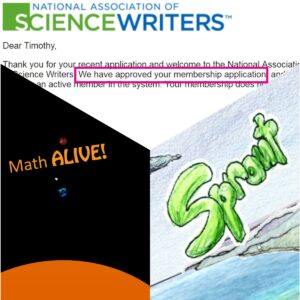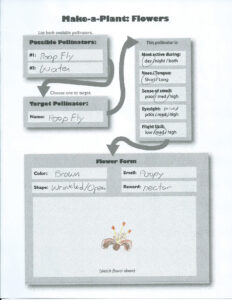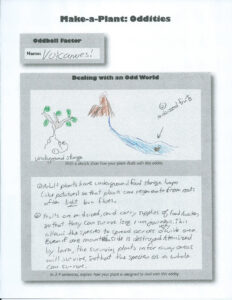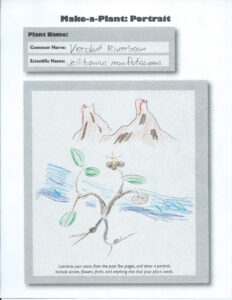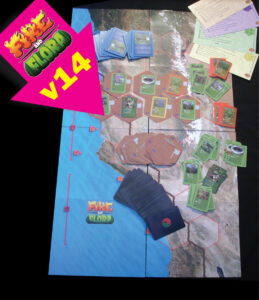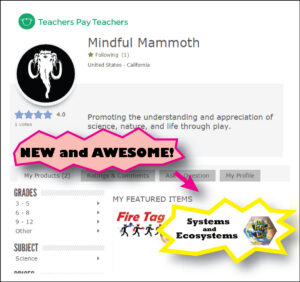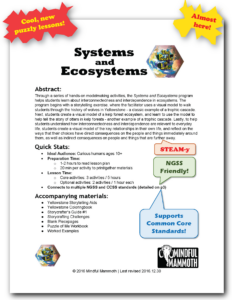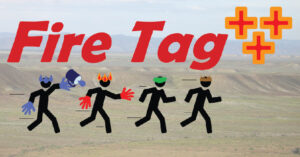So what’s been going on? Lots of stuff.
During the week of April 17, I partnered with two teachers in North Hollywood to bring the Systems and Ecosystems outreach program to their students. This is the sixth (?) time that I’ve run the full program, and it all worked out remarkably well. Students enjoyed working together to find solutions to The Puzzle of Life. I was particularly impressed with them for their unusually effective teamwork. Students then practiced their ecological modelmaking skills by creating kelp forest Puzzle pieces, and using them to tell the true story of Urchins, Otters, and Hidden Forests. Building on this puzzlecrafting experience, they then went on to each create a new version of The Puzzle of Life based on their own personal priorities.
In this last activity, they were stunningly creative. Starting from a central piece, they worked outwards to build chains of supply and consequence, asking hard and important questions in the process.
- One student noted that plants ate sunshine, that sunshine came from the sun, that hot gasses made the sun shine, but then got stuck on the question of the origin of those gasses. He asked me, where do these gasses come from? That’s a deep cosmological question to which I have no good answer. Which is awesome!
- Another student focused on social networks, and created a ‘human’ piece that produced happiness. The happiness then went into a fuzzy sort of open space. Confused, I asked for clarification. This student told me that when one person creates happiness, their happiness flows into the environment around them, and creates a sense of happiness in that place. The good vibe in that place then helps others to be happy. Which is all true, beautiful, and amazing!
In design news, I continued developing and teaching the Math ALIVE! class at One Spark Academy, and finished the writing of fifth, sixth, and seventh tutorials. You may recall that this is a Scratch-based class where students slowly build a working model of a solar system using the math of additive change. If you haven’t yet, you should take a look at this short video, which shows the state of the simulation at the end of the sixth tutorial.
In gamemaking news, I’ve made some small progress on the port of Sprout. If you’re supporting us at the $2 tier or above, you should have received a message with a link to an alpha build. The animations are super-rough, but you can see a glimmering of the brilliant design through the fog of the roughness (design credit goes to Jeff Nusz).
Also in April, to help stay up-to-date with developments in the games-for-good field, and to help support folks who deserve support, I again volunteered as a judge for the Serious Play Awards. This requires spending an hour-or-so exploring each of 8-10 games, then writing an official review with some constructive criticism.
Looking towards the future, I will be spending most of May as an on-the-ground teacher. So there will be little motion on big projects for the next thirty days – with one notable exception: Wyrd Con!
Wyrd Con is a story-oriented gaming con in Costa Mesa California. For the first time ever, Mindful Mammoth will be a part of the con, and run several science/story/game events. Specifically, we’ll be sharing Fire Tag, Fire and Flora, and The Puzzle of Life. If you’re in the area, you should come join us!
None of this would be possible without your help. That North Hollywood school, for example, is full of quality people but very short on funds. When they asked us to visit, I offered the usual deal – and said that we’d be happy to work with them on a pay-what-you-can basis. They said they could pay in lunch, and I happily accepted. Wonderful as that lunch was (pizza, if you’re curious) it doesn’t come anywhere near covering the cost of delivering this program. Which means that, really truly honestly, we couldn’t have done this without your help. Thank you.
As a special thanks to those who have supported us at the $10/month level (and above), we’re sending each of you a first-edition, printed paper version of the sixth Scratch tutorial from Math ALIVE! (cue horror/zombie music).
Till next time,
Tim
